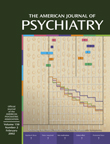A volume in the Saunders Text and Review Series, Psychiatry is a useful option for medical students, physicians, and other health professionals who want to learn the basics of psychiatric assessment. The editors assembled an excellent group of clinician educators and organized data in a format that is readable, user-friendly, and concise. The book’s three sections, Assessment, Psychopathology, and Treatment, provide 1) a framework for assessment and treatment planning, 2) a review of core psychiatry disorders and important symptoms like suicidal ideation and violence, and 3) a discussion of psychotherapeutic and psychopharmacologic treatments. This book review will briefly describe sections with attention to content and presentation, compare the book with other sources of information in the literature, and inform the reader as to how to use it most saliently.
Chapters 1 and 2 focus on case formulation and the clinical interview. Dr. Cutler concisely reviews the basics of case formulation in chapter 1, drawing on the classic paper by Perry et al.
(1) but simplifying it to the level of those less experienced with psychiatric patients. This chapter will serve as a useful supplement to hands-on patient supervision, and figure 1 conceptually depicts the steps of creating the case formulation: the patient presentation, eliciting the history, observation, integration of information into a case summary, and development of a treatment plan. Examples of case formulations are outlined in box 1-1. There are several very good case examples in the text of this chapter, but it may have been more straightforward to use one or two to illustrate each step of the process rather than multiple cases. In chapter 2, Lyle Rosnick’s review of the psychiatric interview is highlighted by the availability of many questions the student, physician, or other health professional may use in eliciting history, particularly in screening for disorders. Once a disorder is suspected, another series of questions focuses on specifics. Chapter 2 also discusses the basics of why patients may choose not to disclose information, consciously and unconsciously, and how psychological defenses are employed. Absent is information about the effect of culture on case formulation, which would be nice to include in the form of a subsection or sample case. For a more detailed exposition on clinical interviewing, the reader might prefer the newer edition of Shea’s work
(2).
The section on specific psychiatric disorders includes chapters 3 through 13. Generally, the format employed is description of the diagnostic and clinical features, interview, differential diagnosis, medical evaluation, etiology, and treatment of each group of disorders. For example, “Mood Disorders” by David A. Kahn is up-to-date, covers an enormous amount of ground in a concise fashion, and demonstrates excellent balance between psychotherapeutic and psychopharmacologic treatment approaches. Leslie R. Vogel and Philip R. Muskin review “Anxiety Disorders” in a detailed fashion in chapter 6, with attention to the role of medical and substance etiologies. Chapter 7, “Alcohol and Substance Use Disorders,” is authored by the experts Frances R. Levin and Herbert D. Kleber and is one of the few articles in psychiatry texts to include a listing of the 12 Steps of Alcoholics Anonymous. In chapter 11, “Suicide and Violence,” Robert E. Feinstein reviews interviewing guidelines, presents the interplay of several factors leading to suicide in figure 11-1, and describes a detailed point system for assessing suicide. Chapter 13, “Life Development,” is well written by Jonathan A. Slater and Dr. Cutler but is perhaps misplaced; it should be located nearer the beginning of the book, where it would have provided a context for understanding the disorders that would follow it. Finally, since the book was published in 1999, the reader will want to keep an eye out for the next edition or use other sources of information for recent psychopharmacologic findings.
The final section reviews therapeutic settings, psychotherapy, and psychopharmacology. It provides a framework in preparation for treatment, with enough tangible information to allow the reader to set goals, initiate basic treatments, and learn how to evaluate them in an ongoing fashion. Chapter 14 discusses the approach to patients who do not speak English, which is critical, although the cultural underpinnings of language differences are not discussed. Chapter 15, “Psychotherapy” by David D. Olds, covers an immense amount of material in a straightforward way, with definitions of treatments that will be helpful to orient medical students, physicians, and other health professionals to a potentially nebulous area of intervention. Olds covers multiple modalities for individual and group treatments and addresses key operational issues, such as how patients learn, ethical issues to be mindful of, and how to combine medication and therapy.
Overall,
Psychiatry successfully accomplishes its aim of providing a framework for assessment and treatment planning for medical students, physicians, and other health professionals. It is well written, practical, and thoughtful, and it gives particular attention to technical pearls of psychiatric interviewing. It compares favorably with the text by Elkin
(3) but is less comprehensive than other longer (and more expensive) introductory or synopsis texts
(4–
6). Medical students will appreciate its conciseness and may use it in preclinical psychopathology courses, in the psychiatric clerkship, or in preparation for part II of the United States Medical Licensing Examination. Medical students with particular interest in psychiatry and psychiatric residents, however, will likely desire a more thorough text. Nonpsychiatric physicians may use it as a basic reference or as a quick method for refreshing the tenets of reassessing patients for whom treatment doesn’t work as expected. Other health professionals may find this book helpful if they have not had formal training in case formulation or need an update on specific disorders. Another edition would be helpful, particularly with minimal reorganization and inclusion of cultural issues.

